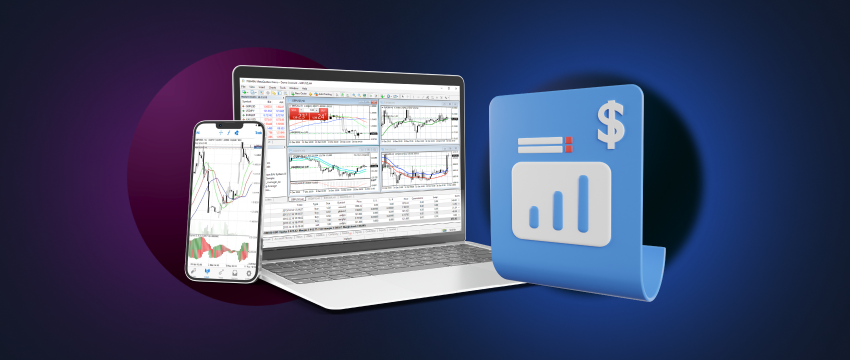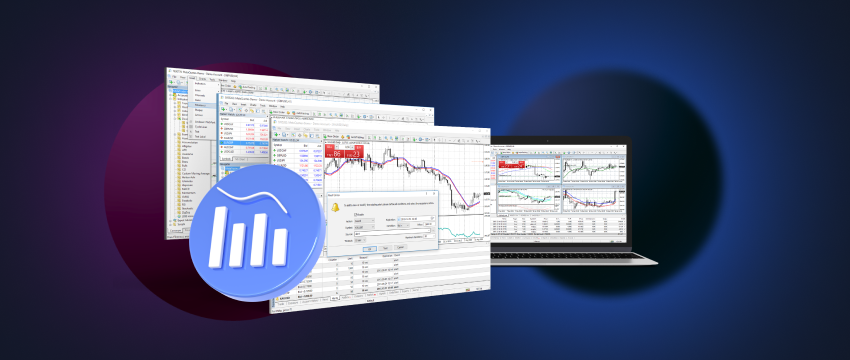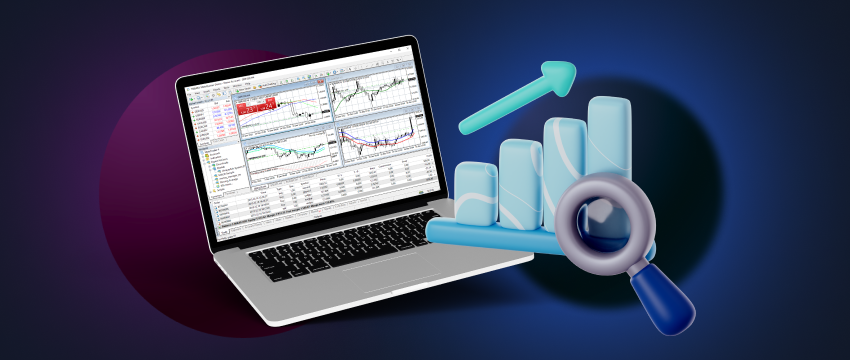As you are probably already aware, the forex market is open 24 hours a day, 5 days a week, operating across multiple time zones. This opens the door to a world of trading opportunities, enabling a trader to implement varied trading strategies to maximize profits, where possible. There are several factors at play that make this decentralized forex marketplace move. Economic events play a pivotal role in driving short-term price movements. Let’s explore this in more detail.

Understanding currencies
As a first step, having a good understanding of the most traded currencies in the world is key. This is because economic events and announcements are likely to impact them the most.
The eight major currencies most renowned among global forex traders are the US Dollar, Euro, British pound, Swiss franc, Canadian dollar, Japanese yen, New Zealand dollar, and the Australian dollar. Some of the most liquid currency pairs are EUR/USD, AUD/USD, USD/JPY, GBP/JPY, EUR/CHF، و CHF/JPY.
Notably, the USD accounts for approximately 90% of all trades. This makes US economic releases incredibly important to follow due to their considerable impact on the forex market.
Trading on news is not necessarily easy though and requires a period of coming to grips with what releases are critical and what other economic data has relevance. The trader must also learn how to track the news effectively.
Monitoring key economic news releases
Forex traders must pay constant attention to the market, and more so if trading the news. They need to know when key releases are made, and what time approximately. Timing is paramount because one release has the power to drive currency prices up or down within minutes, or even seconds.
Hereunder are the times (EST) that each of the listed countries released key economic news:
- United States (USD), 8:30 – 10:00 am
- Canada (CAD), 7:00 – 8:30 am
- Italy (EUR), 3:45 – 5:00 am
- Japan (JPY), 6:50 – 11:30 pm
- United Kingdom (GBP), 2:00 – 4:30 am
- Germany (EUR), 2:00 – 6:00 am
- Switzerland (CHF), 1:45 – 5:30 am
- Australia (AUD), 5:30 – 7:30 pm
- New Zealand (NZD), 4:45 – 9:00 pm
- France (EUR), 2:45 – 4:00 am
What are examples of key economic releases?
For the most part, the most important news releases that have the biggest impact relate to changes in interest rates, retail sales, inflation, industrial production, unemployment rates, business sentiment and consumer confidence surveys, manufacturing surveys and trade balance.
Each factor is more relevant than another depending on the economic health of a particular country. A forex trader must therefore focus on what the market is paying attention to, to make informed trading decisions.

The need for an Economic Calendar
An economic calendar is a useful tool for someone trading the news. It enables a trader to keep track of global economic news events and indicators in real-time.
An economic calendar like that offered by T4Trade allows its traders to stay up to date with key market-moving economic indicators like GDP (Gross Domestic Profit), IPI (Industrial Production Index), PMIs (Consumer Price Indices), and others.
Also, the economic calendar gives a forex trader the opportunity to plan trades based on the dates of key releases or events that might have an impact on price movements. Traders also use the calendar to adjust their portfolios, monitor indicators, and chart patterns and trends that might be influenced by these key events.
Risk management techniques for trading economic events
Trading the news does come with its own inherent risk, even though it can also be highly profitable. High volatility and unanticipated price movements often occur as a result of news releases. It is therefore crucial to have proper risk management strategies in place to protect your capital.
Some of the most commonly used risk management techniques implemented by news traders include:
- Stop-loss orders: a pre-defined order whereby a trade is exited if a price moves against the trader.
- Trailing stops: a type of stop-loss order that trails an asset’s price, locking in profits if prices rise.
- Limiting the use of leverage: minimizing the use of leverage to avoid excessive exposure leading to losses.
- Portfolio diversification: spreading investments across different asset classes to reduce risk.
- Ongoing analysis of market sentiment: assessing the bullishness or bearishness of the markets.
- Effective position sizing: exercising caution on how much capital to allocate to each trade.
- Use of hedging: involves offsetting losses by taking an opposite position.
Trading a news event
The process of trading an economic release begins with picking an event that is speculated to impact the market, i.e., one that has a high correlation with the market. Determine entry and exit points and establish relevant stop loss and take profit targets. The number of markets you choose should align with your level of expertise and budget.
Over time, this number may go up as you gain more trading experience. Monitor the news in real time as the event unfolds as market sentiment can change within seconds. Execute your trade and closely monitor the market for any unexpected developments or price movements. Stick to your risk management plan to ensure trade is exited in time to avoid large losses. Once the trade has been closed, review its performance to establish what could be done better or more effectively next time.
Making use of a demo trading account
If you’re new to trading or are only now deciding to trade the news, signing up for a demo trading account to practice this way of trading is super helpful. A demo account offers the trader a simulated trading environment, mimicking live market conditions. In this way, a trader can learn how to read the news, analyze the markets, and make trading decisions using virtual funds, safeguarding their own capital.
The حساب تداول can be utilized to multiple new trading strategies, assess results, and adjust if necessary. With time, you will learn to identify what your strengths are, and what areas need improvement, thereby gaining the confidence and expertise needed to become a skilled trader.

Trading the news with T4Trade
T4Trade is quickly becoming a powerful broker, sought out by traders worldwide for the optimized trading experience it provides. This includes multiple account types, flexible leverage, competitive spreads, quick execution, and fast withdrawal and deposit of funds. Additionally, T4Trade’s top-tier multi-lingual customer support team provides a 24/5 service to traders across the globe, be this through email, telephone, or live chat.
Learning resources
T4Trade’s Academy is also an incredible resource for learning more about trading the news. The Academy offers traders access to an economic calendar to keep track of current and future financial activities and indicators. This includes exact dates, times, and useful currency-related and/or market-moving data. T4Trade’s Live TV provides daily analysis and live discussions with an expert team of presenters and researchers.
Furthermore, traders can also access informative webinars, podcasts, and videos-on-demand, that cover a variety of topics and deliver useful trading tips and insights for free. Traders can also read a variety of blogs that offer a wide scope of knowledge and answer many of the most popular questions that traders are asking. In addition, traders can also make use of T4Trade’s FAQ page which provides valuable information for opening and maintaining a trading account.
إخلاء مسؤولية: This material is for general informational and educational purposes only and should not be considered investment advice or an investment recommendation. T4Trade is not responsible for any data provided by third parties referenced or hyperlinked in this communication.




